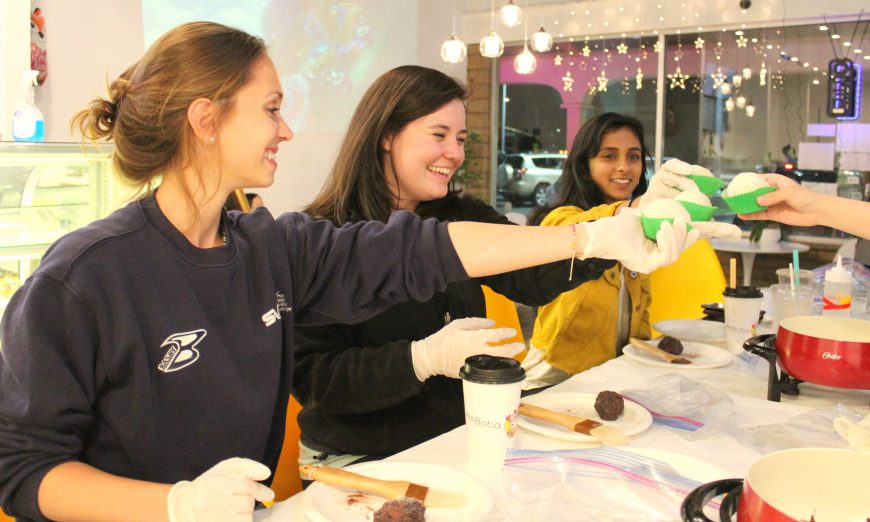Since its store opening at the end of January, WeBoba has been serving boba drinks (beverages with sweet tapioca balls), specialty teas and desserts. On a recent Tuesday evening, latex gloves got sticky and oily while the store patrons wearing them took a mochi making classes taught by Julie Lin, owner of WeBoba.
During the class, Lin introduced her students to the history of mochi among different Asian cultures.
“I believe that sticky rice, also known as glutinous sweet rice, was originally grown in Southern China because it requires humid temperatures and a lot of water to grow,” Lin said. “Later, this kind of rice was also grown in Japan. About 1,000 years ago, when Japan and China had a good relationship in trade, sticky rice was imported into Japan as a high-end dessert for the wealthy. Korea, Japan and China all had the same rice culture. But sweet rice, at that time, required a special set of agricultural skills to grow. So sweet rice desserts were once only for the wealthy. People in a lower social class had to mix their glutinous sticky rice with potato flour. Now, everyone can enjoy sweet rice desserts, regardless of their class.”
In her class, Lin taught the Korean style of making mochi, which is known for its chewy texture. This mochi making class came with four main steps.
“In the first section, students learn how to cook the sweet rice,” Lin said. “It can be tricky to cook sweet rice because it’s not cooked the same way as regular rice. If you add too much water, the rice will lose its glutinous texture. If you add too little water, then the rice might burn or might not fully cook.”
Next, students learned how to “pound the rice,” which entailed preparing the mochi dough from the cooked sweet rice. Then, each student prepared the filling for their mochi ball by wrapping a layer of red bean paste around a strawberry. Other examples of mochi fillings could include melted chocolate and pieces of a banana.
“Finally, students wrap the mochi skin over the filling and learn about managing the temperature and nature of the mochi skin,” Lin said. “Along the way, I teach tricks for dealing with the mochi dough when it becomes sticky, which is adding oil to the latex gloves worn during the mochi making.”
At the end of the lesson, Saagari Coleman, one of the mochi making students, proudly dusted her completed mochi ball with powdered sugar as a finishing touch.
“It tastes amazing,” Coleman said of her mochi ball. “The texture of the mochi was akin to slime. It’s buoyant and malleable. The blend of textures in your mouth include the doughy texture of the mochi, the tart strawberry, the firm red bean paste and the powdered sugar, with its dry slipperiness.”
WeBoba is located at 3030 El Camino Real in Santa Clara. Visit www.webobatea.com for information about the store’s mochi making class and other events.






